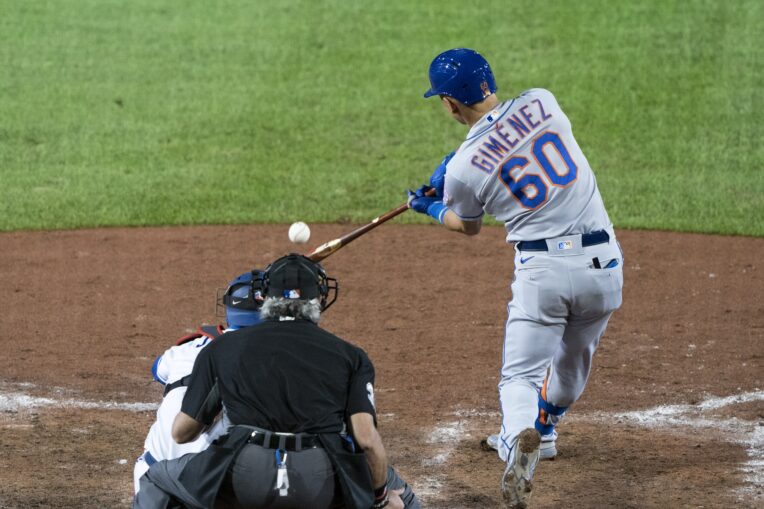
With the tender deadline now behind us, the Mets’ offseason is full steam ahead.
Even without a general manager, the team decided to cut bait with Chasen Shreve, Paul Sewald, Ariel Jurado, and Nick Tropeano, leaving them with 34 players on the 40-man roster.
Sewald and Jurado were not yet eligible for arbitration but were out of options and did not have a chance to crack the Opening Day roster. Non-tendering both leaves open the opportunity to re-sign them to minor league contracts after the Rule 5 Draft next week, which isn’t a bad move given the organization’s pitching depth. The players would have to agree to the plan, however.
Shreve and Tropeano would not have been expensive, having been projected to earn about $3 million combined through the arbitration process, but both were Van Wagenen acquisitions without a clear path to an Opening Day roster spot.
Shreve was solid in 2020 (albeit in an extremely low-leverage role) but was going to be one of the many arms competing for the last one or two spots in the 2021 bullpen. Like Jacob Barnes, Shreve could not have been optioned if he didn’t make the team out of Spring Training. Unlike Barnes, Shreve did not agree to a pre-tender deal and will instead bet on himself on the open market.
Tropeano was also likely offered a pre-tender contract since he has one accessible option left, but seeing that he was unlikely to be on the Opening Day roster, the Mets would have wanted to add a minor league split salary to his contract. It isn’t possible to do so with a contract awarded through arbitration (without prior club-player history, perhaps he was likely to get there), so Tropeano is similarly hoping another team can guarantee him a major league salary.
With that said, let’s break down how the remainder of the Mets’ roster shapes up ahead of what is sure to be a busy offseason.
Starting pitchers (9 on 40-man)
Spots secured: Jacob deGrom, Marcus Stroman, David Peterson (rotation); Noah Syndergaard (IL)
The Mets decided to hang on to Steven Matz, signing him to a $5.2 million pre-tender deal that avoids the risk of going to arbitration and locks in his salary for budget purposes as the offseason progresses. Matz’s salary is not guaranteed, so if it is determined by March 17 that he won’t make the Opening Day roster (he can refuse an option to the minors), he can be released and only be owed 30 day’s termination pay ($838,710).
From a depth perspective, there isn’t much risk here. Money isn’t an issue (still hard to comprehend typing that out) and you can do a lot worse in the role Matz should serve.
Corey Oswalt is out of options and would have to clear waivers to return to Syracuse as depth. Should the Mets reach full capacity on the 40-man at some point this offseason, he’s likely one of the first to go.
Young arms like Franklyn Kilomé, Sam McWilliams, and Thomas Szapucki are not yet in line for full-time roles but can continue their development in the minors. Kilomé has used three options but should be eligible to receive a fourth in 2021.
The Mets are going to need more pitching to fill out their rotation — both in Queens and Syracuse. Players who could take a minor league deal include the recently-non-tendered Carlos Rodon and Tyler Anderson, Gio Gonzalez, and Aaron Sanchez.
Relief pitchers (11 on 40-man)
Spots secured: Seth Lugo, Edwin Díaz, Miguel Castro, Trevor May, Dellin Betances, Brad Brach, Jeurys Familia
In an eight-man bullpen, the above group leaves two spots up for grabs. If the Seth Lugo-to-the-rotation experiment is shelved, four pitchers would be competing for the final roster spot.
The aforementioned Barnes is out of options so, at present, he seems to have the upper hand on Robert Gsellman, Daniel Zamora, and Drew Smith.
Another major league free agent bullpen arm is certainly a possibility at this point, with southpaws like Brad Hand, Justin Wilson, and Jake McGee still on the market. Filling out your relief corps with veterans, however, leaves very little room in terms of roster flexibility. Díaz and Lugo would be the only optionable relievers in the group as currently constructed.
Catchers (3 on 40-man)
Spots secured: none
Run to the sportsbook with this prop bet: the Mets will be adding a major league catcher to their roster this offseason.
Whether that’s J.T. Realmuto remains to be seen, with James McCann, Mike Zunino, and Jason Castro on the free agent market and Willson Contreras and Salvador Perez perhaps available in a trade, but someone — perhaps multiple someones — is coming.
Tomás Nido showed in 2020 that he might have more potential with his bat than previously thought, but the sample size was a paltry 50 plate appearances. If he can hover around league-average, coupled with his solid glove, he’s a serviceable backup. That shouldn’t preclude the team from exploring their options, though.
The best of Ali Sánchez (strong glove) and Patrick Mazeika (strong bat-to-ball skills) is a good player, but of course, each is only as good as the individual. Depending on how many outsiders at the position are brought in, either or both could find themselves cut to make room.
Infielders (7 on 40-man)
Spots secured: Pete Alonso, Jeff McNeil, J.D. Davis, Andrés Giménez
Robinson Canó’s suspension opens up some interesting infield machinations for the Mets in 2021. The most direct outcome is likely McNeil assuming everyday second baseman duties with Davis the third baseman for now.
Giménez is clearly the favorite for the starting shortstop job, and it helps that Amed Rosario is still optionable. If a trade for a player at the position is consummated, Rosario is likely sent out at a low cost.
Luis Guillorme, like Nido, had a strong year with the bat in very limited playing time. If the bullpen is as stacked with un-optionable arms as previously surmised, Guillorme is likely going to be one of the first to be sent down when a rested pitcher is needed.
Robel Garcia, like Barnes and Tropeano, was claimed off waivers in the final days of the Brodie Van Wagenen administration. Like Barnes, Garcia was tendered a contract and will head to Spring Training, though he’s at the end of the 40-man and could be cut for space. He does have one option left and offers a power/defensive versatility skillset.
José Peraza is next in line in terms of minor league depth, but the Mets will likely continue to add in that area.
Outfielders (4 on 40-man)
Spots secured: Michael Conforto, Brandon Nimmo, Dominic Smith
Many expected Guillermo Heredia to be non-tendered, but look at the outfield depth in the organization past the presumed starters if the season started today: Mallex Smith, Johneshwy Fargas, Quinn Brodey, and Tim Tebow.
Thus, it wasn’t a shock to see Heredia, an above-average defender in his own right, agree to a relatively cheap $1 million deal. Like Matz, that contract is not guaranteed until Opening Day.
Bottom line
Moves like signing McWilliams, retaining Heredia, and letting go of Sewald, Shreve, and Jurado bode well for the Mets’ roster flexibility going forward. Sandy Alderson is clearly prioritizing optionable players to fill out the 40-man, which will prevent the eventual loss of a depth piece on waivers.
In general, you can build roster depth in one of two ways: internally or externally. This organization has failed for multiple years to develop internal depth, with virtually no future major league talent on its Triple-A and Double-A rosters.
When Van Wagenen took over, he tried to go the external route, signing the likes of Rajai Davis, Adeiny Hechavarria, and Hector Santiago to minor league deals. That plan failed miserably.
I’d expect Alderson and his future general manager to be active in all avenues of talent acquisition: minor league free agency, the Rule 5 Draft, the minor league phase of the Rule 5 Draft, and the waiver wire, to name a few.
For now, the Mets have six spots on the 40-man roster to play with and, at best guess, have 10 spots on the Opening Day roster still up for grabs.















